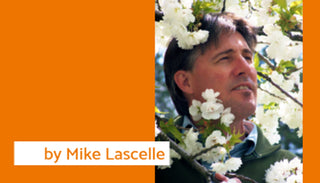This is not a plant family that lends itself to that clean, formal look, but rather, poppies need to be carefully blended into the mixed border to yield the best results. Smaller species such as Iceland (Papaver nudicaule) or Alpine Poppy (P. alpinum) work best in wildflower meadows or rockeries as both bloom throughout late spring and well into summer. Although short-lived or biennial in nature, they readily self-seed to keep the display going from year to year.
The longer-lived Oriental Poppy (Papaver orientale) is much more ephemeral in nature, at least as far as flowering is concerned, blooming an average of only 10-14 days and then going dormant afterward. That said, few perennials produce such large satiny flowers that seem to capture the rays of the sun and glisten in jewel tones of salmon pink, ox-blood red, intense orange and maroon. Then there are the much sought-after but notoriously hard-to-grow Blue Himalayan Poppies (Meconopsis) which have frustrated many an experienced gardener, including myself.
Still, these are worthy perennials for any landscape, and with that in mind, here is an overview of what can be blooming in your garden throughout the growing season.
Flanders Poppy (Papaver rhoeas)
Most of us know these single scarlet flowers as the symbol of Remembrance Day, as referenced by John McCrae’s famous poem, In Flanders Field. The reason being that these vigorous self-seeding annuals flourished in the disturbed soil between the trenches of enemy lines and came to represent those lost in WW1. We can enjoy these cheerful red flowers naturalized in grass meadows or as mixed strains of pink, white, and coral blooms (both single and double forms), which are known as Shirley Poppies.
Opium Poppy (Papaver somniferum)
Contrary to popular belief, the sale and import of Opium Poppy seeds in Canada is legal as most people are enjoying them as ornamentals or harvesting the edible seed, which is used for those delicious Poppy Seed Rolls. The flower colour and form are quite diverse, ranging from pure white (‘Sissinghurst White’) to purple (‘Hungarian Blue’) to spherical pink doubles (‘Pink Peony’) and highly fringed burgundy-red (‘Black Swan’). Normally they are a lovely pink with contrasting purple blotches, and for the largest seed heads (size of a baseball), look for ‘Giganteum’. These are self-sowing annuals but if you are lucky enough to get some seeds from a gardening friend, direct sow in fall on the soil surface or lightly covered (they need light to germinate) and keep evenly moist.
Horned Poppy (Glaucium flavum)

A bit of a rare, short-lived perennial native to North Africa that often reseeds itself. It bears 3”-wide bright yellow blooms over scalloped bluish-grey foliage and requires a full-sun exposure with sharp drainage. This one really hates being relocated or overwatered, so let it thrive on the neglect.
California Poppy (Eschscholzia californica)

This member of the Poppy Family hails from the southwest US and Mexico, bearing four-petaled orange blooms that close up at night (or on cloudy days) and open again in the morning. They are zone 8 hardy, so we usually grow them as self-seeding annuals which should be sown after the last spring frost or in the fall. Mixed colour strains such as ‘Mission Bells’ broaden the palette to include semi-double blooms of red, yellow, deep pink, and cream.
Himalayan Poppy (Meconopsis Spp.)
This group of species includes the much sought-after M. grandis and M. betonicifolia (the exact taxonomy is still in flux) or Blue Himalayan Poppies that are notoriously hard to grow. I recommend planting a well-established 4” or 1-gallon plant in dappled sunlight or an open shade location with a slightly raised prepared bed (down to 18”) amended with topsoil, compost, and fine bark mulch. Also, remove any flowers in the first year to divert the plant’s energy to root growth. Meconopsis napaulensis or the Nepal Poppy is also worth seeking, although it is equally difficult to cultivate. That said, it sports large clusters of variable blooms that can include white, pink, yellow, and true red.
Oriental Poppy (Papaver orientale)
These are the royalty of the Poppy Family, commanding our attention with their huge May to June blossoms that glisten in the summer sun. The colour range is equally impressive with hues of rich pink (‘Raspberry Queen’), maroon (‘Patty’s Plum’), white (‘Royal Wedding’), scarlet (‘Brilliant’), pale salmon (‘Princess Victoria Louise’), orange (‘Prince of Orange’) and ox-blood red (‘Beauty of Livermore’), all sharply contrasted by inset black blotches. Companion plant with tall Shasta Daisies (Leucanthemum), Russian Sage (Perovskia), or Purple Coneflower (Echinacea) to cover up their summer dormancy. You can propagate these by root cuttings (about pencil-sized) once they have gone dormant in July.
Spanish Poppy (Papaver rupifragum / syn. atlanticum)

A hard-to-find but easy-to-grow species with abundant apricot-orange blooms (3” wide) for much of the summer. Useful for covering dry slopes as it tolerates drought (once established) and lean soils, and it readily self-seeds. Semi-double forms such as ‘Flore Pleno’ are also available.
Iceland Poppy (Papaver nudicaule)
This useful but short-lived perennial or biennial self-seeds and is best used as filler in large perennial beds where its precocious growth can help to displace weeds. Still, this ‘filler plant’ does bloom from May to October and comes in many eye-catching mixes (yellow, pink, orange, red, and white) including ‘Champagne Bubbles’ (large flowers) and ‘Garden Gnome’ (compact), as well as solitary colour strains such as ‘Spring Fever Orange’.


